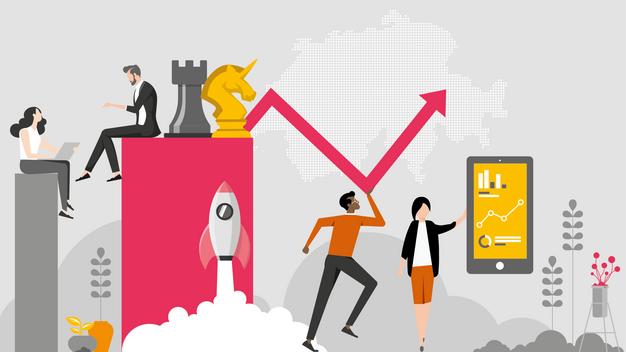Planet: Protecting the planet is the first stage of sustainable behaviour
Planet
In the beginning, there was the world
From a historical perspective, protecting the planet is the first stage of sustainable behaviour. In the wake of the nuclear disaster at Chernobyl and the major fire at the Schweizerhalle industrial site near Basel in 1986, concern for the environment shifted into the public consciousness – and onto corporate agendas. Social and governance aspects were added later.
Climate leaders like Greta Thunberg have given climate protection a youthful dynamism and drive. In Swiss family businesses too, the next generation is driving the sustainability efforts of their venerable, age-old companies.1 Legislation and self-regulatory initiatives are providing the necessary framework, such the Federal Council’s Climate Strategy 2050. These frameworks aim to conserve natural resources, avoid damage to the natural ecosystem, reduce greenhouse gas emissions, achieve climate stability and promote biodiversity.
1 Die NextGen ist ambitioniert, motiviert und qualifiziert, PwC Switzerland, 2020
Biodiversity as a key to survival
Mass extinctions and species poverty have many causes: changes in land use, overexploitation, acidification and pollution of the oceans. These rapid changes drastically limit natural carbon sequestration, which in turn exacerbates climate change. This negative spiral increases the risk of financial market instability2 as it poses various risks with enormous macroeconomic effects. One specific example: if plants needed to be pollinated artificially instead of naturally, it would result in additional annual costs of 153 billion euros. This makes it all the more important for companies to disclose their biodiversity-related risks and conduct regular stress tests.
2 Nature is too big to fail – Biodiversity: the next frontier in financial risk management, PwC Switzerland, 2020
Blue economy in a rich shade of green
The ‘blue economy’ describes a sustainable development approach to coastal resources, from fisheries, aquaculture, maritime transport, coastal, marine and maritime tourism right through to coastal renewable energy, marine ecosystem services (e.g. blue carbon), seabed mining and bioprospecting. Blue economy companies are helping to reduce marine pollution and curb ocean acidification. The World Bank believes this approach has enormous potential.3 According to WWF, the annual ‘gross marine product’ of the oceans is 2.5 trillion US dollars.4 This would make the blue economy the eighth largest economy in the world.
3 The Potential of the Blue Economy: Increasing Long-term Benefits of the Sustainable Use of Marine Resources for Small Island Developing States and Coastal Least Developed Countries, World BankGroup, United Nations, 2017
4 Billionenschweres Brutto-Meeres-Produkt, WWF, 2015
“The CO2 footprint is key to communicating a commitment to sustainability in a transparent way.”
Tragedy of everyday things
You know the situation: you order a jumper over the internet, only to send it back because it doesn’t quite fit or you don’t really like it. Few people realise, however, that much of this returned clothing is destroyed. Reprocessing and re-shipping would raise prices to a level that consumers are unwilling to pay and also cause further CO2 emissions. The responsibility to do the right thing not only lies with the manufacturers and traders but with each and every individual. We need to question our personal behaviour as consumers. This is particularly difficult for us in the case of goods which we like to fill our everyday lives with while giving no thought to their negative impact on the environment.
Tracking the CO2 footprint
This parameter evaluates the impact on the climate and shows the potential for savings and efficiency measures. It looks at both direct and indirect emissions from the generation of purchased electricity, steam, heat and cooling. The CO2 footprint is key to communicating a commitment to sustainability in a transparent way. It forms part of sustainability reporting and is used to formulate reduction targets, for example within the framework of a net-zero commitment.
A planet with many opportunities
The goal of decarbonisation is seen as a major opportunity for economic actors. It should include upstream supply chains, product use, the consumer environment and the end of the lifecycle. With a net-zero commitment, a company can contribute to its country’s overall reduction path and climate goal, and help shape social change.
Transparent investment decisions should also be seen as an opportunity. This includes, for example, a stringent reporting system based on ESG (environmental, social and governance) criteria. An excellent example of a planet-friendly vehicle is shown by the world’s first wildlife conservation bond. The World Bank hopes it will increase the population of black rhinos in South Africa.
By taking circular approaches, companies can make a commitment to the planet. That’s why it’s worth considering the use of hydrogen, biofuels or negative emission technologies. The latter retrieve CO2 from the atmosphere, for example through reforestation or ocean fertilisation.
Interviews with people
You can read about how people and organisations are taking responsibility for the Earth in the following interviews. The Federal Office for the Environment (FOEN) has provided a framework for change. As Switzerland’s oldest nature conservation organisation, Pro Natura is giving nature a strong voice. And The SeaCleaners task force is personally fighting against the pollution of the world’s oceans.




